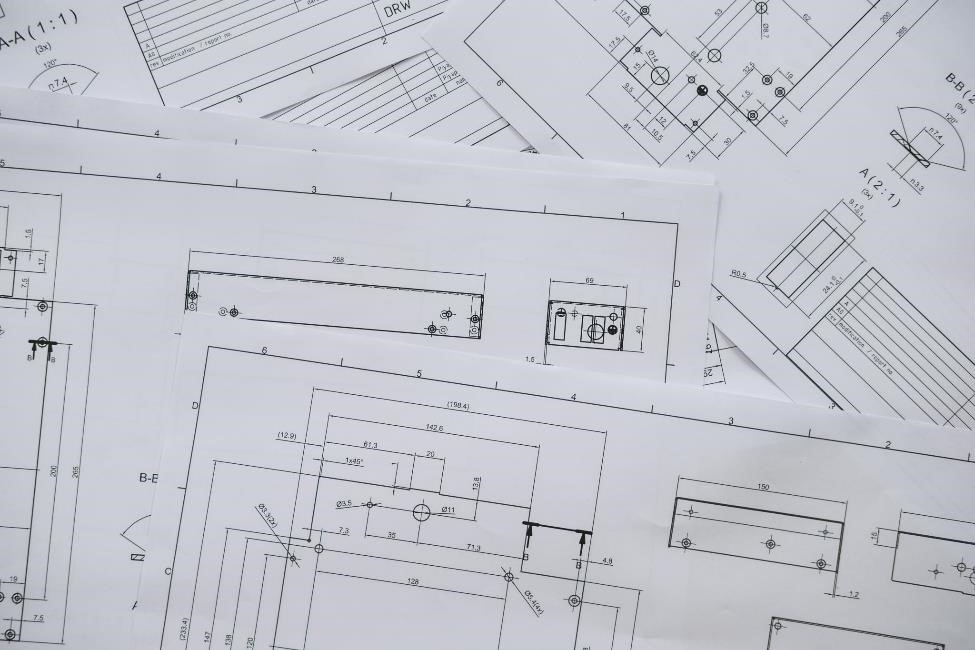A few months ago marked my first year since starting at Pro-Demnity as an in-house architect with our Risk Alliance Department. An important and exciting part of my new position has been providing architectural support to our claims and legal teams in their defense of claims against architects. This role gives me an opportunity to review a wide array of architectural documents linked to active claims.
I’d like to share some insights on how information (or lack thereof) in the architectural documents might help (or hinder) an architect’s defense when they are named in a claim or lawsuit.
Here are 13 practical steps to implement right now to be better prepared for a claim. Even if one doesn’t transpire, you’ll have improved your risk management system for the better:
- Use industry-standard contracts for your agreements with clients (such as OAA 600) and consultants (such as OAA 900). I’ve noticed that the projects in many of our claims have used agreements established through fee proposal letters, emails, or client-authored or consultant-authored agreements. Industry-standard contracts contain language beneficial to you and aligned with your professional liability policy terms.
- Include as comprehensive specifications as you can into your project documents. Detailed specifications sometimes include requirements that could help with your defense in a claim, such as referenced standards, procedures, submittals, warranty requirements and general requirements.
- Include details in your drawing set at an appropriate scale to show critical exterior envelope conditions such as window jamb, head and sill conditions, material transitions, and top and base of wall conditions. Many water infiltration claims involve the installation of membranes and flashings, which sometimes have not been detailed by the architect at scale where it is clear how they come together. If in doubt, consider engaging an envelope consultant to aid in designing typical details applicable to your projects, or if do not feel your services include producing these details, make sure this point is clear in your agreement with the client.
- Many of our claims involve scope that was reviewed or supposed to be reviewed by third-party inspection agents. Check that you and your client concur on any third-party testing and inspection expectations for architectural scope, including what scope will be reviewed and the frequency. Document this agreement in writing. Follow up prior to construction to check that third-party agreements are in place. Remember to maintain appropriate information exchange with the third-party agents during construction and review their reports as required to fulfil your own professional obligations on the project. Ask for and keep records of third-party submittal reviews and site reports.
- Ask for a copy of the construction contract. Even for projects not following a traditional design-bid-build delivery, the construction contract may still contain language regarding the ‘role of the consultant’ or other design requirements for the project. This is helpful information for you to be aware of.
- Be diligent on following up with the contractor for your project on required construction schedule submissions and check that these submissions are in the format and contain the information required by the contract documents. Raise and document any concerns early and often. In the event you are named in a delay related claim, these records can prove helpful to your insurer.
- Consider requiring that the contractor develop a submittal schedule at the outset of construction. Advance planning of the number and timing of submittals during construction can aid the contractor to better manage the construction schedule, and having these records can also be valuable to your defense in delay-related claims.
- Monitor that all submittals that are required in the specifications and/or the submittal schedule are submitted. If a submittal is deemed unnecessary, consider removing the requirement for the submittal formally through a Supplemental Instruction. Keep records. In the event of a claim concerning a product or material which required a submittal that wasn’t provided, you might be questioned on why you, as the architect, didn’t highlight this omission. It is beneficial for your defense if you can account for any required shop drawings and submittals pertaining to the allegations in a claim.
- Maintain and retain tracking logs of received and returned dates for submittals, Requests for Information (RFIs), and construction changes. This is not only helpful information for your insurer in the event of delay-related claims, but in the event of a claim the party who keeps the best records of this sort is the one who will likely be able to tell the most compelling narrative.
- Issue regular site review reports documenting what was reviewed and observed during site visits. In some claims, we’ve found that while architects have been on-site during construction, they have issued very few or no reports. Having a record of site review reports that demonstrate your involvement in visiting the site can help your defense team to establish your standard of care for project. Include detailed observations and deficiencies (where applicable) on your site review reports.
- Take dated photos of what you have reviewed when on site and keep them as records. Photos serve as documentation of what you looked at when you were on site and may help to establish your standard of care.
- Refer to the wording on the Ontario Association of Architects (OAA) ‘Final General Review Report’ template for your final letters to municipalities. These letters are often submitted as evidence in claims, and we see some that lack clarity on the scope of review (i.e., Architectural), and the relevant performance standard (i.e., Ontario Association of Architects).
- Finally, throughout the project be sure to keep your records up-to-date, and to name and file your documents and emails in a manner which will make it easy for future retrieval of information, such as by date, sender or recipient, and content. Clear naming conventions prevent information from getting overlooked, especially when a claim is dealing with hundreds or thousands of emails and documents.
Although I haven’t yet seen it all, I’ve seen enough in our claims files to suggest that implementing all, or even several, of the suggestions above, consistently across every project, will go a long way to better prepare for a future claim situation.
For more personalized architectural practice risk management advice, you may request a complimentary and confidential meeting to Speak with an Expert, or Report a Claim.
Our Contributor

Leslie Parker, M.Arch, OAA, MRAIC, is an experienced architect with extensive knowledge in contract administration and project management of large teams, as well as deep expertise of built environments for healthcare, long-term care homes, and design for seniors. As Architectural Risk Advisor at Pro-Demnity, she monitors new developments in the profession and leverages this knowledge to contribute to the research and development of Pro-Demnity’s risk education material, initiatives and programs, while offering relevant and timely one-on-one risk guidance to architects. She is a licensed Ontario architect, with a BA from St. Thomas University, Fredericton, New Brunswick, as well as a Bachelor of Environmental Design Studies and Master of Architecture from Dalhousie University, Halifax, Nova Scotia.

